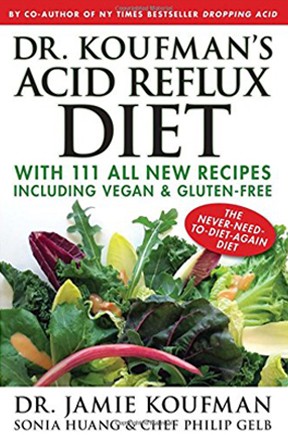What Causes Exercise-Induced Asthma and Acid Reflux, and Is This Problem Preventable?
At-A-Glance
- According to the Mayo Clinic, 90% of asthmatics have breathing problems (“asthma”?) when exercising. So too do non-asthmatics with acid reflux who during exercise may experience “pseudo-asthma”; its symptoms are wheezing, cough, shortness of breath, and sometimes heartburn.
- Coincidence? I don’t think so: Exercise-Induced Reflux causes both true asthma (difficulty getting air OUT of the lungs) and pseudo-asthma (difficulty getting air IN). This IN/OUT distinction is critical to proper diagnosis and treatment; and most physicians don’t know this!?
- There is an inexorable link between reflux and asthma, that is, most often reflux causes asthma and asthma-like symptoms. This fundamental relationship is not understood by the medical establishment, even by pulmonologists (lung specialists). Indeed, when it comes to acid reflux and its protean respiratory manifestations, contemporary healthcare is still in the Stone Age.
- When it comes to exercise-induced reflux, some types of exercise are worse than others, especially activities that shake or put pressure on the stomach like jogging/running, aerobics, Zumba, sit-ups, crunches, planking, and downward-facing dog. Some forms of exercise are less likely to cause reflux, such as elliptical training, walking, and light weight training.
- What can be done to prevent exercise-induced reflux? Besides choosing the right type of exercise, symptoms can be prevented by: (1) exercising before, rather than after eating; (2) taking an antacid and an alginate before exercising; and (3) chewing gum or sucking on a hard candy during exercise.
I have practiced medicine for over 40 years and during that time; I have seen thousands of patients with “asthma,” but when asked, “During an ‘asthma’ attack, do you have more trouble getting air IN or OUT,” and more than three-quarters of my patients respond IN! In addition, they report that the asthma medications that they are on don’t help.
IN vs OUT. Trouble with inhalation (breathing IN) is never asthma; it is reflux and the constriction of the airway is at the level of the vocal cords, i.e. laryngospasm or paradoxical vocal cord movement; see Choking Blog. These patients have what I call “pseudo-asthma.”
It is important to know that all my pseudo-asthmatics had reflux-testing that proved that they had reflux. So, I conclude that most people diagnosed with asthma don’t have it; and it’s not just because they don’t have expiratory wheezing, most of the other symptoms, e.g., cough, excess throat mucus, choking, go better with reflux than with asthma.
Case Example: A world-class marathoner came to see me with shortness of breath, cough, and excess mucus during the first 30-45 minutes of running. He felt that he could not get enough air IN. I inserted a pH-monitoring (reflux-testing) device in his throat, and then had him run up and down stairs for 10 minutes. When he reentered my office, he was short of breath, breathing IN; and when I examined his throat and pH-monitoring device, I found that his vocal cords were closing during inspiration (the opposite of normal) and that he had pH-documented LPR.
For my marathoner’s treatment; see What Can I Do to Prevent Exercise-Induced Reflux? below. And for more information about reflux-related breathing problems; see my Article and the Choking Blog.
If you have “it,” you need to know that the medical mainstream has “asthma” all wrong, because surprisingly, most doctors don’t know or understand the IN/OUT criteria for breathing problems … asthma (OUT) … reflux (IN). And another stumbling block: the “go-to” doctor for acid reflux, the gastroenterologist, knows virtually nothing about LPR, and has no way to diagnose it, let alone treat it effectively.
What Causes Breathing Problems During Exercise?
The first question is to characterize breathing problems. Is there wheezing, noisy breathing? If so, is the wheezing with inhalation, exhalation, or both? Is there shortness of breath in which it feels as if the person just can’t get enough air IN? Are there other symptoms such as heartburn, globus, too-much throat mucus, or cough?
The Mayo Clinic website provides very confusing and incorrect information; and they never make the connection between exercise-induced reflux and exercise-induced breathing problems that they call “asthma.”
According to the Mayo Clinic: Exercise-induced asthma is a narrowing of the airways in the lungs triggered by exercise. The preferred term for this condition is exercise-induced bronchoconstriction (EIB), because the exercise induces narrowing of airways (bronchoconstriction). Symptoms include coughing, wheezing, shortness of breath, chest tightness or pain, fatigue, and excess mucus.
Indeed, patients with the above constellation of symptoms usually have LPR reflux; only if there is trouble getting the air OUT of the lungs, prolonged expiration, is it EIB.
More Mayo Article Problems: About 90% of people with asthma have EIB; however, the condition can occur in people without asthma, too. In addition although anyone can have EIB, it’s more common in high-level athletes.
Unbelievable! How can high-level athletes, who do not have asthma, develop “exercise-induced asthma”? Because it isn’t asthma, it’s reflux; see case example above.
The causes of EIB listed by the Mayo are cold or dry air, air pollution, chlorine in swimming pools, chemicals from ice cleaning equipment; and activities with extended periods of deep breathing, such as long-distance running, swimming or soccer. The Asthma and Allergy Foundation of America adds high pollen counts to the list of causes of EIB; and interestingly states, “Coughing is the most common symptom of EIB and may be the only symptom you have.”
While it is true that allergy and toxic fumes can sometimes trigger an asthma attack, the above list of causes are nonsensical. And cough is never the main symptom of asthma … but it is of LPR reflux.
By the way, reflux can actually cause a real asthma attack. Sue Harding from UAB has studied this relationship; and in one paper reported that aggressive antireflux treatment in asthmatics improved lung function by 73%.
Staggering Ignorance: Exercise-Induced “Asthma” Is Usually LPR!
Neither the Mayo Clinic or the Asthma and Allergy Foundation of America mentions the IN/OUT distinction OR mention reflux as a cause of exercise-induced breathing problems.
Implications of this Misdiagnosis: Today, 25 million people have “asthma” at a cost of $80 billion per year. That computes to more than $3,000 per year per patient. If my misdiagnosis estimate is correct, that three quarters of “asthmatics” have reflux and not asthma, then making the correct diagnosis, Respiratory Reflux (LPR), would save the nation $60 billion a year and then all those refluxers might get the help they really need, antireflux treatment.
What Can I Do to Prevent Exercise-Induced Reflux?
First, do exercises that minimize reflux. Some types of exercise are worse than others, especially activities that shake or put pressure on the stomach like jogging/running, sit-ups, crunches, planking, and downward-facing dog. For joggers and runners, symptoms are usually experienced during the first 30 minutes, and tend to decrease after that; this applies to long-distance runners.
Some forms of exercise are less likely to cause reflux, such as using an elliptical trainer, walking, light weight training. If you could talk continuously when lifting, the weight isn’t too heavy. If you spin, take the “old lady” bike, the one where you sit upright, not scrunched over like you are racing in the Tour de France.
Despite the above warning, using the precautions below, most people can do the “shaking” exercises such as jogging/running and aerobics. But still prohibited are exercises that increase intraabdominal pressure, e.g., sit-ups, crunches.
Second, exercise before, rather than after eating.
Never exercise on a full stomach. But if you feel that you must have something to eat like a banana or smoothie, still wait two hours before exercising and follow the other recommendations below. Also, I believe that exercise in the morning is usually better reflux-wise than exercise late in the day.
Third, take acid-suppressant and alginate before exercise
I recommend that people with exercise-induced reflux and breathing problems take OTC famotidine (Pepcid) 40 mg. before exercise and a tablespoon of alginate, too. I recommend Gaviscon Advance aniseed as the most effective. This forms a raft in the stomach and helps stop up the lower esophageal sphincter from below. An alternative alginate to Gaviscon is Reflux Gourmet, but I still prefer Gaviscon.
Finally, chew gum or suck on a hard candy during exercise.
When you chew gum (not mint), or suck on a hard candy, things happen that help prevent reflux. First, you make more saliva with a high concentration of acid-neutralizing bicarbonate. Second, you swallow more, driving the digestive system in forward. These factors seem to help prevent both exercise-induced reflux and post-cibal (after meal) reflux.
In conclusion: Breathing problems during exercise are almost always due to respiratory reflux, not asthma. (If you follow my blog, you know that I now prefer the newer and more intuitive term Respiratory Reflux … as a better term for LPR, Laryngopharyngeal Reflux.) The precautions that I have recommended in this blog work well, so if you have this problem, try them.









